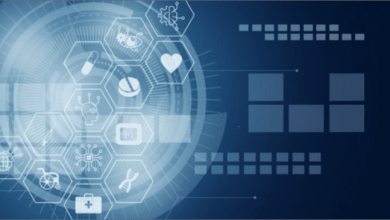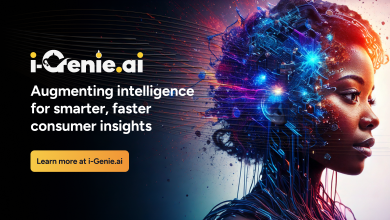
Not long ago, generative AI was seen as an experiment—useful for quick demos, but not something you’d rely on for building real products. Today, AI is now woven into the daily work of software teams, helping them design prototypes, catch bugs earlier and keep projects moving faster.
The shift isn’t about replacing people. It’s about giving developers and product leaders more leverage, freeing them from repetitive work so they can focus on bigger architectural and business decisions. AI can accelerate the process, but it still takes human judgment to make sure products are scalable, secure and sustainable.
Democratization of Development
One of AI’s biggest contributions is accessibility. A solo founder with an idea can now spin up a prototype in a week instead of waiting months for contractors. Small teams can test an idea with customers before spending serious money.
The upsides are obvious: validation happens earlier and you can show investors or users something tangible without waiting for a full build; and barriers are lower so startups don’t need large budgets just to get a proof of concept into the world.
Yet this democratization comes with caveats. AI-generated prototypes often look polished but hide structural flaws. Without expert input, it’s easy to misjudge how much more work is needed to get from “demo” to “deploy.” And costs like infrastructure, security and maintenance don’t go away just because AI got you started quickly.
Practical advice for founders: use AI to explore and validate ideas, but bring in a technical advisor early, and budget realistically for what comes next. Think of the prototype as a sketch, not the finished painting—it’s valuable but incomplete.
Prototyping with Generative AI
Generative AI shines in the earliest stages of development. It can draft wireframes, mock up interfaces or even build a starter codebase. This speed changes the pace of brainstorming. Non-technical founders can now take part in shaping ideas directly, while developers can often skip boilerplate and focus on deeper technical challenges.
Still, AI isn’t magic. It can’t architect a payment system or design for long-term scalability unless you know exactly what to ask for—and even then, the results need careful review. Left unchecked, AI outputs can create a false sense of readiness.
To use it well:
- Treat AI outputs as drafts. They’re great for sparking ideas, not running in production.
- Always validate with developer input. No AI-generated code should move forward without review.
- Use AI as a collaborator. Think of it as a fast-moving co-pilot, not the captain of the ship.
AI in Quality Assurance
Testing has always been one of the most time-consuming parts of development. AI helps by writing test cases, running regression tests at scale and flagging issues faster than humans alone could. This cuts down on repetitive work and lets QA teams focus on creative, exploratory testing where human insight matters most.
But automation can’t replace strong foundations. If your QA process is weak to begin with, layering AI on top won’t fix it. Human testers are still needed to interpret results, catch edge cases and decide what actually matters.
The best approach is balance: use AI to handle repetitive checks and let people focus on the nuanced testing that ensures a product feels right to the end user.
Transformation of Developer Skills & Workflows
For developers, the nature of the work is changing. AI is taking over repetitive coding, but that doesn’t make human expertise less valuable—it makes it more strategic.
Developers now need to:
- Decide what can safely be handed to AI.
- Evaluate AI-generated code with a critical eye for accuracy and security.
- Work within standardized pipelines where AI is a constant presence.
Workflows are evolving too. Iteration cycles are shorter. Teams are collaborating earlier and more often. And developers are spending less time on boilerplate and more time on architecture, performance and user experience.
This is also where uniquely human qualities make the biggest difference:
- Intuition can signal when something feels off before metrics do.
- Perspective helps teams connect technical choices to business outcomes.
- Empathy ensures products are built for people, not just machines.
- Creativity fuels genuine innovation, not just recombination.
- Critical thinking keeps teams from blindly trusting outputs.
The takeaway for developers: use these strengths. AI can accelerate the process, but only people bring the qualities that push products forward in meaningful ways.
Opportunities and Risks for Non-Technical Founders
For non-technical founders, AI feels like a breakthrough. With the right tools, you can go from an idea on paper to a clickable prototype that impresses investors or partners—all without writing a line of code.
But empowerment comes with risk. Overconfidence is the most common trap—mistaking a prototype for a product-ready system. Scaling, hosting, and security don’t get solved automatically by AI.
The most sustainable path forward is to:
- Use AI to validate and refine ideas quickly.
- Bring technical advisors into the process early.
- Budget for the “real” build—the infrastructure, people, and operations that will keep your product running.
Future Outlook: AI in Development
Looking ahead, AI will be everywhere in the development lifecycle. Within three to five years, it will be unusual to find a project that doesn’t use AI for prototyping, testing or workflow automation. Developers who adapt will see huge productivity gains, while teams that resist risk falling behind.
Conclusion
AI is no longer an optional experiment in software development—it’s a core part of how work gets done. It speeds up prototypes, strengthens QA and reshapes workflows. It also empowers non-technical founders in ways that weren’t possible before.
But success doesn’t come from AI alone. Teams that thrive will be the ones who embrace AI as a tool while doubling down on the human strengths that it can’t replicate: intuition, perspective, empathy, creativity and critical thinking.
AI is not a replacement for developers; it’s an amplifier. The future belongs to teams who use it as a co-pilot—fast, capable and tireless—while keeping people firmly in the captain’s seat.



